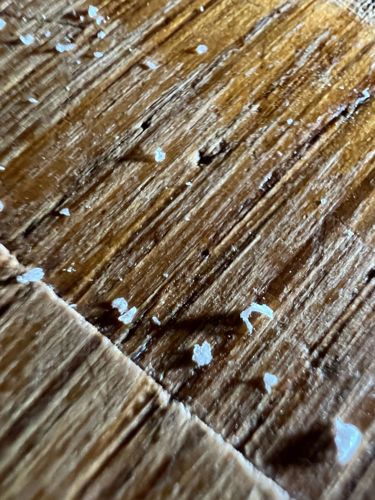Drywood termite frass
Scientific Name: Reticulitermes spp. or Incisitermes spp. (frass is difficult to identify to species without context)
Order & Family: Blattodea, Rhinotermitidae or Kalotermitidae
Size: Frass pellets are typically less than 1 mm in length.

Natural Habitat
Found in dry wood, such as structural timbers, furniture, and wooden objects in homes and buildings. They do not require contact with soil.
Diet & Feeding
Termite frass is the excrement of wood-eating termites. The termites themselves feed on cellulose found in wood.
Behavior Patterns
Drywood termites are social insects that live in colonies within the wood they infest. They create galleries and tunnels inside the wood, and their frass (fecal pellets) is often expelled from small kick-out holes in the infested wood. The presence of frass is a key indicator of a drywood termite infestation.
Risks & Benefits
Drywood termites are significant pests that can cause extensive structural damage to homes and buildings over time. They can compromise the integrity of wooden structures, leading to costly repairs. There are no known benefits of drywood termite frass or the termites themselves to humans or the ecosystem in a domestic setting.
Identified on: 10/30/2025